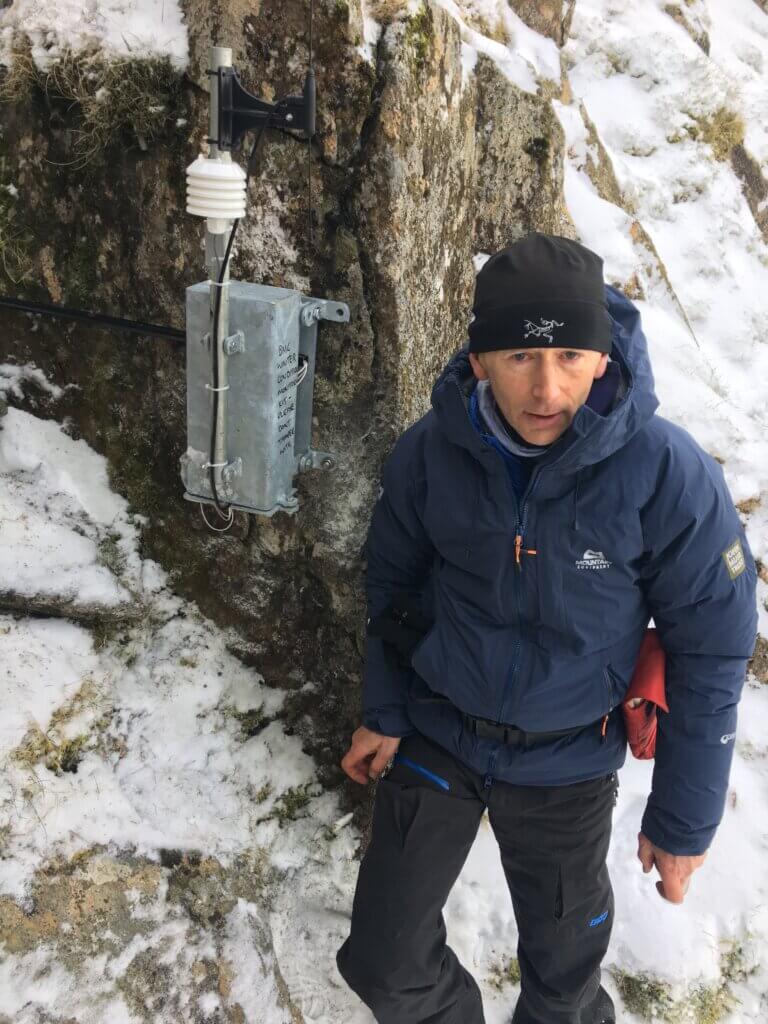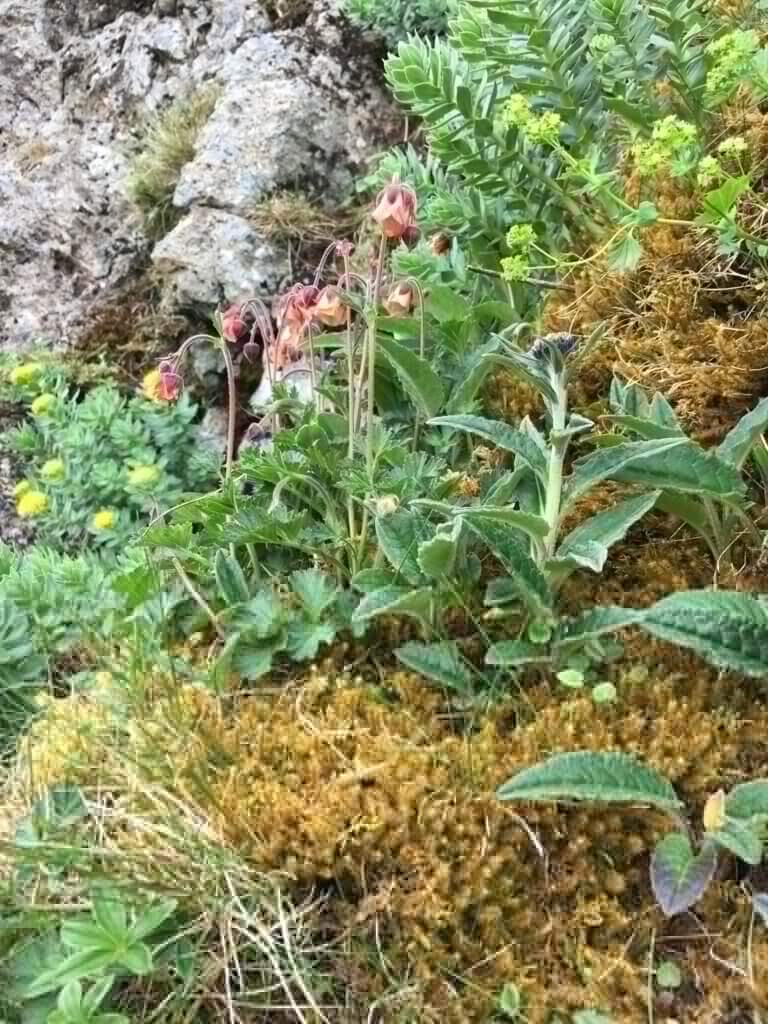
After 23 years working for the Lake District National Park (LDNP) as a ranger, Pete Barron now works for the John Muir Trust. John Muir Trust is an organisation dedicated to the protection and enhancement of wild land through land ownership and partnerships, environmental education largely through the enormously successful John Muir Award and policy work looking at wild land threats as they arise. See www.johnmuirtrust.org
Having had Helvellyn, England’s third highest mountain, in my work area for all the years working with the LDNP, it wasn’t a difficult decision to agree to work with the John Muir Trust over much of the same upland area when they agreed a lease with the LDNP, the land owners, who were looking at efficiency savings.
For over ten years before this, I had worked on a joint project with Natural England to survey all the land in the LDNP over 600m to establish a picture of its remaining arctic-alpine flora. Much of the survey work needed to be undertaken by specialist climbers and upland botanists (a rare breed themselves) due to the potentially hazardous nature of the survey areas, with the results always eagerly awaited. Through this work and a previous joint agency initiative for the whole of the Helvellyn area much is now known of the specialist flora growing on the high crags adding to the important work undertaken by renowned naturalist Derek Ratcliffe in earlier years.
The crags of the Fairfield and Helvellyn SSSI are the most important area in England for their arctic-alpine flora and montane scrub with some surviving species hanging on but failing to increase in population size. A classic example of this is downy willow (Salix lapponum) which was reduced to only 23 shrubs across the Helvellyn coves with a study finding that the remaining shrubs were all female, no men on site! A search for males and further genetic diversity found our nearest downy willow neighbours to be just over the border in Dumfries. Cuttings were duly taken and initially grown on by Natural England staff and me. More recently, an enthusiastic group of local growers in the Ullswater valley below Helvellyn, have opened their gardens, greenhouses and sheds to increase propagation of this rare species and have now branched out into growing other rare upland shrubs such as tea-leaved willow (Salix phylicifolia) and a rare hybrid of this and dark-leaved willow (Salix myrsinifolia). The success of this local propagation project has now put more than 1,000 montane willow plants back onto the crags. The trees are now producing seed and we are eagerly awaiting our first self-seeded tree! Who knows what the future will bring for the uplands of England, but change is coming and the return of self-seeded montane scrub is a dream worth holding onto.
Since the John Muir Trust came to Glenridding and Helvellyn, we have worked with the volunteer growers, supported by the expertise of our local Natural England officer (and alpine plant enthusiast), to move onto growing other arctic-alpine plants from seed and planting back out onto the crags. This work bolsters existing populations or restores species we know have been lost in recent times. A classic example is alpine mouse-ear (Cerastium alpinum);lost from the Red Tarn Crags due to erosion caused by walkers. The eroded land has been restored and we hope to replace the plant into its previous site soon. Some of the plants our community growers are working with, such as water avens (Geum rivale) are relatively easy to propagate, but our biggest success to date has been successfully growing (from local seed) a much more difficult species, alpine cinquefoil (Potentilla crantzii), and planting them out onto the Helvellyn crags once more.
It isn’t all about growing as overall habitat protection is important too. In conjunction with the British Mountaineering Council and Natural England we have installed a temperature monitor at 830m altitude which records both air and ground temperatures giving climbers thinking of winter climbing on Helvellyn real time web-based information. Ground temperatures are an important indicator of climbing condition and frozen turf. As part of a climber’s judgement as to the suitability of winter climbing, this advice aims to protect the vulnerable flora on the crag from climbing in unfrozen conditions which can be damaging for this rare habitat (see https://www.thebmc.co.uk/lake-district-winter-conditions).
Having finished last year with the collection and planting of thousands of crab apple seeds in the autumn, for us and our community of growers in the Ullswater Valley, the time of year is approaching fast when cuttings are taken and planted, thoughts of seed collection begin and we take stock of what has survived the winter for planting back out onto the crags. Who needs a telly?!

Thanks Peter, loved this!!
Great blog Peter and I wish you and your growers continuing success! I would be interested to know how well the cooperation with climbers works with respect to avoiding climbing when turf is unfrozen.
Good people are working hard to restore and protect wildlife but meanwhile there are sadly still those who wantonly destroy it in this country and elsewhere. Reports of two Bonnelli’s Eagles shot in SW France https://www.facebook.com/CABS2011/photos/a.1078665775481108/3290818950932435/?type=3&theater
How refreshing to see a true environmentalist getting up and doing something. What a contrast to those idiots digging up the lawns of Trinity College in the name of the environment.
Why so much fuss over a little bit of lawn in Cambridge, it is not as if Britain is short of tidy lawns? The protesters are only acting like wild boar. Maybe it is the untidyness that offends? Trinity College invests in fossil fuels and Cambridge Uni takes large amounts of funding from Shell etc.. It is quite legitimate for Extinction Rebellion to highlight this by gaining publicity through digging up the lawn and dumping spoil in Barclays Bank. They are fighting the ongoing extinction of nature and are partly responsible for pushing the Government into declaring a Climate Emergency, more power to their elbows.
Smashing tale. It’s a repeat of the NTS work at Ben Lawers and if you’ve not already, I’d suggest contacting them. I’m sure there would be valuable tips and hints; it’s 20 years since they enclosed a large calcarious cliff, and longer for the smaller enclosures.
Control over management of sheep would or might reduce the need for high altitude fencing there and in Perthshire there’s the deer impact to manage too. It’s a great place to visit and you’re sure to learn something.
Re sheep. I believe there’s a complication relating to Commoners Rights. Not sure of the details.
Good work, that’s great news. I remember reading about rock climbing in the 1930s, in Snowdonia I think, and the author described a particular new route as ‘gardening all the way’. I take that to mean they had to gouge out all the plants and earth from cervices so they could climb. Such people bear a huge amount of blame for the impoverishment of our hills. Shows that bare areas now may have been very rich in plants in the past. The very last places that sheep and deer hadn’t ruined, and they were destroying them. Appalling.
These practices are thankfully pretty rare now, with most climbers being fully aware that these are bad ethics!
Thank you Peter for a very interesting blog. Great to know the alpine flora of the Fairfield and Helvellyn Range is still being well looked after.
Must take you to task about 2 things though. Why, oh why, is there no mention of sheep? The woolly maggots are THE problem for the alpine flora not walkers. Your Natural England ‘alpine plant enthusiast knows this. Must say, in passing, he is a man of vision for whom I have much respect.
The mention of Cerastium alpinum being destroyed by walkers is probably true, but it was on Striding Edge! and I was the person who mentioned it to Natural England. BUT it is the only example I can think of and I have been roaming the crags and corries for pleasure and work since the eighties. I have never seen a walker on crags and they are rare in corries. Walkers love their paths!- where they do no harm.
My partner Keith and I were in the forefront of planting Salix lapponum on Helvellyn and have done many crag surveys for your ‘alpine plant enthusiast’ and Natural England.
Keep up the good work!
You are one of the ‘rare breed’ I refer to Mo. Your work on arctic-alpines has been as important as anyone. Grazing pressure is now significantly reduced with the situation improving over time. The eroded gully with Cerastium you found by Striding Edge is now repaired and stabilised. Thanks Mo and hope you are both well.
Power to your elbow. Imho the propagation and maintenance of plant genetic material – food crops included – is one of the most important threads in conservation.
I found it depressing to learn, many years ago, that sheep were more intelligent than humans, as they had realised they could move around on very narrow paths, whereas humans were afraid of treading in the same place as other humans and made paths wider and wider. In that context I often wonder at the wisdom of publicising success stories such as here. Someone will always try to exploit it by organising Ecocide Tours to promote the need for soil erosion, lavatories and car parks.
I was intrigued to see the mention of G. rivale – a favourite of mine. It grows happily in my garden and at forest path margins on chalk dipslopes in S Wilts – more than a tad warmer than Helvellyn.
What a fascinating read. As a keen fell walker and alpine plant enthusiast it’s great to know that people are working to help the high crags look as they should and help to reestablish naturally occurring plants. Golden Eagles too ?
Great blog, Peter. I wish I had a head for heights and complicated rope work. No amount of telly can rival being in the actual presence of these exalted, near-pristine habitats – pockets of relict tundra left over from the end of the last ice-age.
What you are doing is heroic but should a few crags be selected and protected from any interference whatsoever except for detailed vegetation monitoring? After all, such habitats have survived on the brink of extinction during certain periods throughout the last ten millennia – surely they are now potentially useful signal stations in these times of increased and exceptional change.
Perhaps those absentee willow-menfolk are trying to tell us something? Or rather, perhaps those female willows are saying: look, we’re still surviving without blokes, just wait, watch and see how we can adapt on our own?